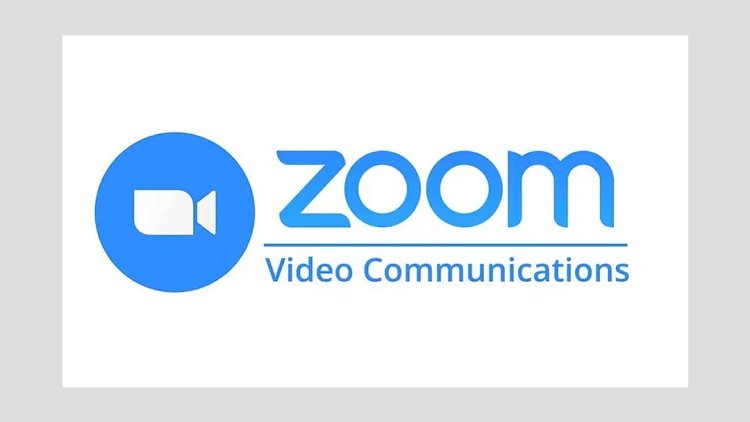Understanding Zoom Communications: Evolution, Growth, and Business Model
Zoom Communications, Inc. (formerly Zoom Video Communications, Inc., commonly shortened to Zoom and stylized as zoom) is an American communications technology company best known for its videoconferencing software, Zoom.

Zoom Communications, Inc. (formerly Zoom Video Communications, Inc., commonly shortened to Zoom and stylized as zoom) is an American communications technology company best known for its videoconferencing software, Zoom. Headquartered in San Jose, California, the company was founded in 2011 by Eric Yuan, a former Cisco engineer and executive. Zoom officially launched its software in 2013, and while the platform has grown immensely, it has also faced public and media scrutiny related to security and privacy concerns—issues the company has addressed over time
| Attribute |
|---|
| Company Name |
| Formerly |
| Company Type |
| Traded As |
| Founded |
| Founder |
| Headquarters |
| Area Served |
| Key People |
| Products |
| Services |
| Revenue (2025) |
| Operating Income (2025) |
| Net Income (2025) |
| Total Assets (2025) |
| Total Equity (2025) |
| Number of Employees (2025) |
| Website |
A Quick Look at Zoom
Zoom is primarily recognized for its flagship product, now called Zoom Workplace (formerly Zoom), which supports video and audio conferencing, screen sharing, chat, and several collaboration tools. The core software is proprietary and offers both free and paid subscription plans. The free plan includes limitations on meeting time and participant numbers, while paid plans expand these limits and add additional features.
Here are some quick facts:
-
Company Name: Zoom Communications, Inc.
-
Headquarters: San Jose, California, U.S.
-
Founding Date: April 21, 2011
-
Founder: Eric Yuan
-
Primary Product: Zoom Workplace
-
Revenue: $4.67 billion (2025)
-
Net Income: $1.01 billion (2025)
-
Employees: 7,412 (as of 2025)
-
Website: zoom.com
The Beginning of Zoom
Eric Yuan, previously a VP at Cisco Webex, started Zoom in 2011 with 40 engineers. Originally named Saasbee, Inc., the company struggled initially to secure funding due to market saturation concerns. However, by June 2011, it had raised $3 million in seed money from tech veterans like Subrah Iyar (WebEx founder), Dan Scheinman (former Cisco SVP), Matt Ocko, TSVC, and Bill Tai.
In May 2012, the company was renamed Zoom, inspired by Zoom City, a children's book by Thacher Hurd. A beta version was launched in September 2012, supporting 15 video participants. In November 2012, Stanford University became the first customer. After raising $6 million in Series A funding, Zoom launched officially in January 2013, with version 1.0 allowing 25 participants per call. Within a month, Zoom had 400,000 users. By May 2013, that number hit 1 million.
Fast Growth and Important Events :
In 2013, Zoom partnered with B2B platforms like Redbooth, and hardware firms including Logitech and InFocus. That September, Zoom raised $6.5 million in Series B funding and had 3 million daily meeting participants.
By 2015, Zoom received $30 million in Series C funding and had served 40 million users across 65,000 organizations. That same year, it integrated with Slack, Salesforce, and Skype for Business. Zoom version 2.5 increased participant limits to 50, and later to 1,000 for business clients.
In 2017, Zoom achieved unicorn status by raising $100 million in Series D funding at a $1 billion valuation. It launched a telehealth product for doctors and announced integrations with Polycom, Slack, and Workplace by Facebook. Zoom also began developing AI speech recognition tools.
Initial Public Offering and Pandemic Boom
Zoom went public on April 18, 2019, debuting on the Nasdaq under the ticker ZM. The IPO was a massive success, with stock prices rising over 72% on day one. Zoom became profitable that same year.
In 2020, as the COVID-19 pandemic spurred global lockdowns, Zoom saw an unprecedented spike in usage. The app became the 5th most downloaded in 2020 (after TikTok, WhatsApp, Facebook, and Instagram). It was especially adopted in remote work, online education, and virtual events. Zoom provided its platform free to K–12 schools in many countries and was added to the Nasdaq-100 Index in April 2020.
Buying and expanding in a smart way:
In May 2020, Zoom acquired Keybase, an end-to-end encryption company. By June, Zoom had hired its first Chief Diversity Officer, Damien Hooper-Campbell. Later in 2020, Zoom opened R&D centers in Pittsburgh and Phoenix and planned to hire 500 engineers.
In June 2021, Zoom acquired Kites, an AI-based real-time translation company. Though Zoom planned a $14.7 billion acquisition of Five9 in September 2021, the deal was rejected by Five9's shareholders.
In 2023, Zoom cut 15% of its workforce (~1,300 employees) as part of a post-pandemic restructuring. It also exited the Nasdaq-100 index. Later, in April 2023, Zoom acquired Workvivo, a platform for employee experience and communication.
In November 2024, the company dropped "Video" from its name, rebranding itself as Zoom Communications, Inc. to reflect its broader focus as an "AI-first work platform".
Privacy, Security, and Regulatory Issues:
Zoom has faced widespread criticism for its security vulnerabilities and privacy issues, especially during its massive growth in 2020. Critics pointed out misleading claims of "end-to-end encryption," weak encryption protocols, and unauthorized data sharing with Facebook, Google, and LinkedIn.
In March 2020, the New York State Attorney General launched an investigation into Zoom’s privacy practices. Though Zoom denied wrongdoing, it agreed to implement stricter measures. That same year, a class-action lawsuit resulted in an $86 million settlement. Zoom also paused new feature development for 90 days to fix security issues, releasing 100 safety features, including:
-
End-to-end encryption for all users
-
Passwords enabled by default
-
Custom data routing options
-
A transparency report
-
A bug bounty program
In November 2020, the FTC settled with Zoom, requiring it to strengthen its security practices. The U.S. SEC and Department of Justice also investigated Zoom over ties to
foreign governments and user data practices.
In December 2020, a former Zoom employee, Julien Jin, was charged by the U.S. Department of Justice for aiding the Chinese government in disrupting video calls about the Tiananmen Square massacre. Zoom terminated Jin and cooperated with investigators.
Hardware, Products, and International Expansion
Zoom expanded beyond software into hardware and bundled services. In July 2020, it launched a "Hardware as a Service" offering for Zoom Rooms and Zoom Phone, available on a monthly subscription with devices from DTEN, Neat, Poly, and Yealink.
Later that year, Zoom introduced Zoom for Home, starting with the DTEN ME—a 27-inch device with integrated Zoom software. The company also opened a data center in Singapore and a tech hub in Bangalore, India.
In 2021, Zoom released Kiosk Mode for virtual receptionists and stopped selling new services directly to customers in mainland China.
Censorship and Global Concerns
Zoom has been criticized for censoring users at the request of authoritarian governments. In June 2020, it shut down accounts of U.S. and Hong Kong-based activists
commemorating the Tiananmen Square massacre. After backlash, Zoom reinstated the accounts and promised a new global policy for content moderation.
A bipartisan group of U.S. senators demanded explanations. Zoom later ceased direct sales in mainland China, citing compliance with local laws. In September 2020, Zoom blocked a virtual event hosted by San Francisco State University featuring Leila Khaled, a member of a U.S.-designated terrorist group. Zoom cited compliance with U.S. export and anti-terrorism laws.
What's Your Reaction?






















